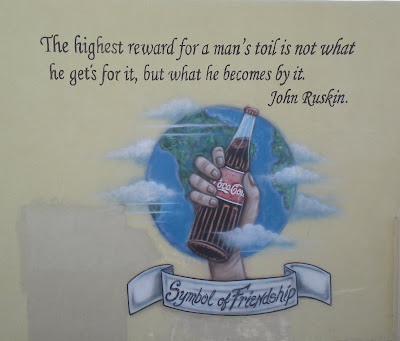Magical Mystery Cure
Anybody who has been following my blog might remember statements like “Giving it up” and “Dropping back out.” Intriguing concepts to be sure, but what do they refer to? Sometimes I find myself knowing things without knowing why. I see through the glass darkly at first. Only later do the details emerge. This is one of those times when I’m finally starting to understand what those statements I made weeks ago really meant.
Like many Americans, I have had it with this country. The situation has become so extreme that I am reluctant to articulate all the things that have gone wrong, even though I haven’t been shy about speaking out in the recent past. I have concluded that speaking or writing about negative situations contaminates my own vibrational field with negativity. (This is perhaps what is warned about by the Biblical injunction, “Resist not evil.”) This doesn’t mean that I’m choosing denial. I’m fully aware of what’s going on out there. It’s just that constant complaining, if not followed by action, is worse than useless.
I have decided to take action for myself. I have decided to TUNE OUT, and in fact already have. I’ve already noticed benefits in my own life. For years I haven’t watched TV, listened to the radio, or listened to very much canned music, so I’ve already been semi-tuned-out. But I’ve been an Internet junkie since I got my first computer in 1996, spending several hours a day logging onto various websites, under the excuse of “keeping myself informed.” But like I said, I’m totally fed up with just about everything the cultural mainstream has to offer these days, so my old habits are losing their allure. I think the last straw was when I realized that I didn’t need to know what Digby thought of Obama’s State of the Union Speech. Something fundamental shifted for me. I realized that I didn’t need to participate as a media consumer anymore, and I went cold turkey from the Internet except for checking the weather and snowpack. I haven’t missed being “informed” at all; in fact I find it liberating. Next I’ll be canceling Netflix.
But doesn’t this mean I’m giving up? Shouldn’t a citizen keep himself informed about what’s happening? In my case, at least, not at all. I already understand the trajectory of this country very well, and I doubt that it will be changing anytime soon. Whenever I choose to re-engage, I can be quickly brought up to speed. (And if I do re-engage, maybe I will have learned something useful in the meantime.) TUNING OUT means I’ve eliminated a huge distraction, a huge energy drain, from my life. I now have extra hours every day to engage with my wife, play music, or sit in my rocking chair thinking about nothing at all... which greatly enhances my spirituality and creativity. The benefits are spectacular so far. It’s a magical mystery cure for the overstimulated brain/mind system.
We all know that America is ripe for something. Like a supersaturated solution, just one seed crystal can cause a massive crystallization event. I think a critical mass of Americans are becoming desperate to try something different. People feel frustrated and helpless. Our present situation is becoming increasingly unsatisfactory. How can we become free once again? It’s hard to become free from the economic system and our joke of a political system, but it’s relatively easy to escape the tendrils of the constant media barrage we’re exposed to. (As McLuhan famously said, “The medium is the message,” which I take to mean that a message of control is inherent within the electronic media themselves, and by our position as passive media consumers.) Tuning out frees us from this control, frees our time, energy, minds and spirits, and is totally risk-free. (We can always tune back in if tuning out proves to be unsatisfactory.)
Just Google “media fast” for any number of fine articles about this subject. Many people have tried it, have experienced positive benefits, and are recommending it to others. I think we’ve reached a point in this country where people are finally willing to actively disengage from the mainstream Matrix. This could catch on. I’m doing my little bit here to stoke the flame of freedom. There will be others.
Tuning out creates unprecedented time and energy for live conversation, live music, live culture, live creativity (is there any other kind?). We have unprecedented opportunities to create creative excitement for ourselves. And creative excitement can create what I call “the extra buzz,” which has more implications than is commonly supposed. It’s about time for this blog to become supernatural again. (That didn’t take long, did it?)



























